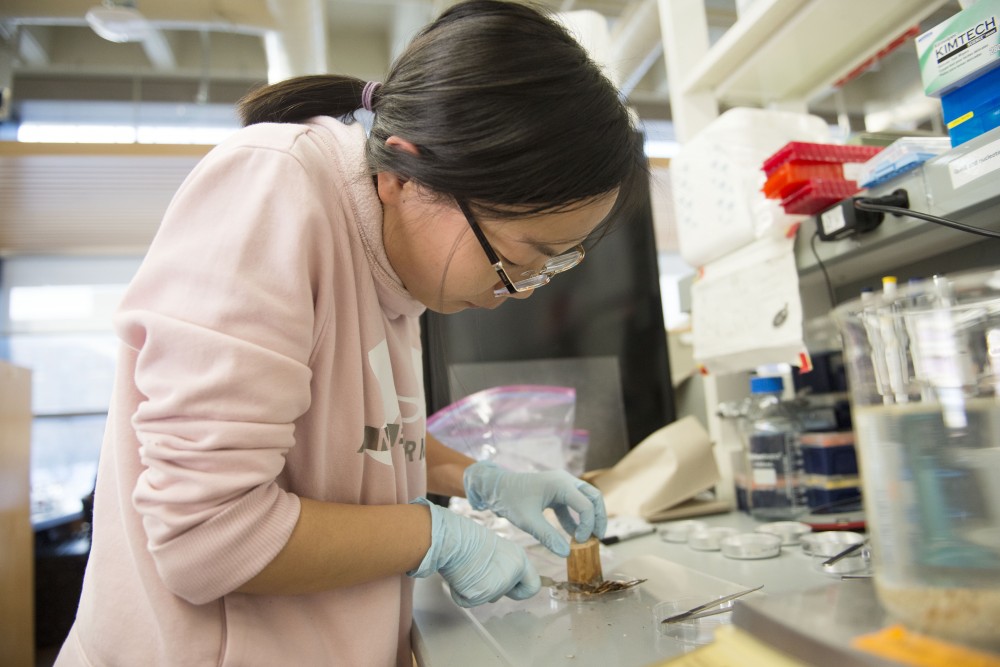The University of Minnesota recently received a $1.5-million grant to study a potential alternative energy source: fungi.
The approximately $1.5 million grant was awarded in September by the U.S. Department of Energy to researchers in the College of Biological Sciences in collaboration with entities across the United States. The researchers are currently studying brown rot, the process of wood-eating by a group of fungi, which could be the key to understanding crucial carbon cycles in the ecosystem. This has the potential to lead to alternative sources of energy.
“We are working with a system, in a nutshell, that is a natural example of an organism that can make energy sustainability from plant biomass,” said Jonathan Schilling, principal researcher who runs the Schilling Lab at the University, which studies fungi. “We don’t completely understand how it works and this is the reason that we do basic science like this.”
Fungi that produce brown rot have enzymes that can extract sugars from wood without removing certain plant cell barriers. This allows the fungi to efficiently extract them and produce energy. Researchers observe this process to learn how to apply this practice in creating more efficient forms of energy. This type of rot is common in northern forests, like those in Minnesota, Schilling said.
The Department of Energy is particularly interested in this research because understanding the process of brown rot creates the potential to better understand the fungi’s energy mechanisms. This could allow for the creation of alternative methods of energy, such as biofuel.

Clark University in Massachusetts, the Joint Genome Institute in California and the Pacific Northwest National Laboratory in Washington are working in conjunction with the University, Schilling said.
“We’re all really concerned about what we humans are doing to the carbon cycle. People don’t always think about the role of fungi,” said David Hibbett, a professor at Clark University who is also working on the research. “We are trying to understand the history of life and the history of the evolution of the ecosystem.”
In order to better understand the process of brown rot and its unique ability to surpass cell barriers, wet lab experiments are being carried out on 39 different types of fungi. In addition, researchers are looking at intricacies of the fungi’s DNA.
The project is focused on comparing different fungi to better understand their potential as energy sources. By comparing more lineages, there can be clearer information gathered in order to understand the brown rot process, said Jiwei Zhang, a research associate of Schilling who works on the project.
Other objectives for the project include looking at fungi gene expression to see how they are controlled and characterized.
Most of the wet lab work, such as the harvesting and growth of the fungi, is being done at the University, Schilling said.
“[With] a bigger and bigger population, we are having to worry about an energy crisis. … [We] need to start looking for sustainable energy on our planet,” Zhang said.









